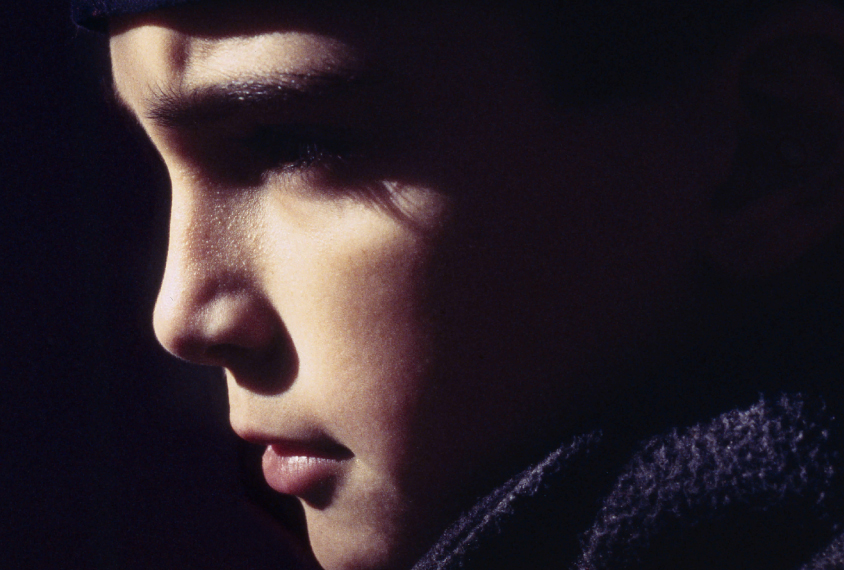
New diagnosis covers ‘borderlands’ of autism spectrum
Children with social communication disorder have the same features as children with autism; they just have fewer of the features.
Children with social (pragmatic) communication disorder (SCD) have the same features as children with autism — just fewer of them, according to a large study of children with either condition1. The results suggest that the condition is a useful addition to doctors’ diagnostic repertoire.
SCD was introduced in 2013 with the release of the fifth edition of the “Diagnostic and Statistical Manual of Mental Disorders” (DSM-5). The move spurred criticism from some experts who said there was little evidence that SCD differs from other conditions such as autism.
SCD is characterized by social difficulties and communication problems, which are also features of autism. The addition of SCD to the manual was part of a diagnostic shake-up that also redefined autism and removed a related condition called pervasive developmental disorder-not otherwise specified (PDD-NOS).
Researchers feared some children would fall through the cracks of the reworked divisions. But the new study suggests SCD captures children with autism features who would not otherwise receive an autism diagnosis.
“It’s a broader term that I understand as existing on the borderlands of the autism spectrum,” says co-lead investigator William Mandy, senior lecturer in clinical psychology at University College London in the United Kingdom. The term captures “kids who clearly have quite high levels of social communication difficulties but who narrowly miss out on meeting criteria for [autism],” he says.
The findings may help to resolve the debate about whether SCD is a distinct condition with its own underlying mechanisms or simply a mild version of autism. Some researchers have long favored the latter idea.
In 2013, Helen Tager-Flusberg suggested that SCD might also be a form of language impairment. The new findings show that the diagnosis “falls on the border between autism and non-autism,” says Tager-Flusberg, professor of psychological and brain sciences at Boston University. Still, “thinking about clinical diagnoses in a categorical way really doesn’t mesh with what we know about how the symptoms or the traits that make up these disorders are really normally distributed in the population,” she says.
Comparing conditions:
Mandy and his colleagues analyzed diagnostic records from 1,081 children aged 4 to 18 who visited a London clinic that specializes in social communication problems between 1999 and 2013.
The children’s parents completed a questionnaire that measures autism features called the Developmental, Dimensional and Diagnostic Interview. They also filled out a checklist that screens for communication difficulties, social problems and restricted interests.
The researchers used these measures to develop an algorithm to identify children who meet the DSM-5 criteria for autism or SCD. They also used existing algorithms to flag children who would have met the criteria for ‘autistic disorder,’ ‘Asperger’s disorder’ or ‘PDD-NOS’ in the last revision of the DSM-IV.
Of the 1,081 children, 801 met the DSM-5 criteria for autism and 88 met the criteria for SCD. The remaining 192 children did not qualify for either condition.
One of the strengths of the study is the new algorithm, which homes in on children with SCD but not other conditions, says Catherine Lord, director of the Center for Autism and the Developing Brain at New York-Presbyterian Hospital. But she cautions that the findings rely on parent reports and not clinician’s observations.
Of the children with SCD, 43 percent would not have received an autism or related diagnosis under the DSM-IV. “You could kind of say [SCD] provides a diagnostic home for that subgroup of kids,” Mandy says. The results were published 25 July in The Journal of Child Psychology and Psychiatry.
The findings mesh with those from a 2014 study of children in South Korea. That study indicates that many children who would lose their autism diagnosis under the DSM-5 would meet the criteria for SCD2.
Open mind:
SCD is not just a stand-in for PDD-NOS, as some researchers suspected, Mandy says: Of the 219 children who met the DSM-IV criteria for PDD-NOS, 156 have autism and 26 have SCD according to the DSM-5; the remaining 37 children would not receive either diagnosis.
The researchers also compared the children using a parent report on hyperactivity as well as emotional and social problems. The proportion of children with SCD who have severe problems according to this checklist is larger than the control group but smaller than the autism group. This finding supports the notion that SCD is a condition of intermediate severity.
The researchers used a statistical test to examine whether SCD symptoms cluster together. They do, but at a rate that is only slightly higher than would be expected by chance, raising questions about whether SCD is a distinct syndrome.
“There isn’t a lot of clarity where this disorder falls with respect to the spectrum of language disorders, the spectrum of autism spectrum disorders,” says A.J. Schwichtenberg, co-director of the Purdue Autism Cluster at Purdue University, who was not involved in the research. Still, an SCD diagnosis may be useful for families seeking services, she says.
Mandy says his “mind is still pretty open” about whether SCD is distinct from autism. Scientists should examine the condition’s prevalence and whether this group benefits from autism treatments, he says.
References:
Recommended reading
Explore more from The Transmitter

Neuro’s ark: How goats can model neurodegeneration



